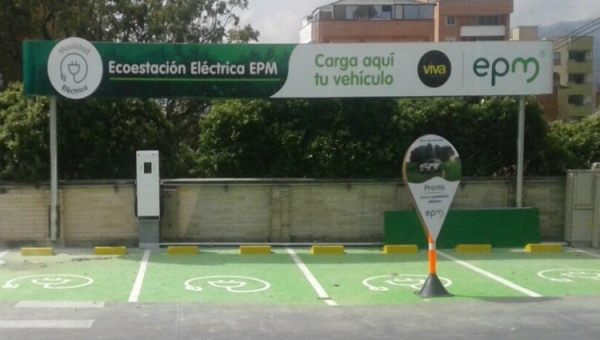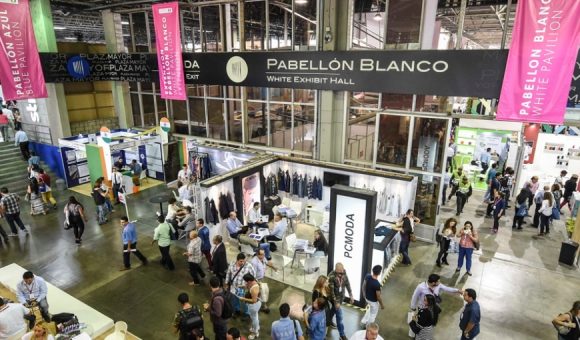‘FISE’ Electricity Congress Generates US$230 Million; EV’s, Solar Power Grab Center Stage

Organizers of the biannual Feria Internacional del Sector Electrico (FISE) electric-power industry conference in Medellin announced December 1 that this year’s edition generated US$230 million in new business deals, of which US$214 million involved 50 international buyers and US$10.9 million from 80 national buyers.
FISE’s organizers include the Chamber of Commerce of Medellin for Antioquia (CCM), the “Cluster Energia Sostenible” (the 867-member power-industry group of metro Medellin), the Medellin municipal government, and Medellin-based electric-power research group CIDET (Centro de Investigación y Desarrollo del Sector Eléctrico).
Organizers combined this year’s version of FISE with two concurrent conferences – the International Center for Hydropower (ICH), and the fifth congress of the Latin American energy integration group (Comisión de Integración Energética Regional, CIER).
Medellin is at the center of Colombia’s top international electric-power conferences as it hosts the nation’s biggest multinational power producers, transmitters, distributors and engineering giants, including EPM, Isa, Isagen, XM and HMV Ingenieros. What’s more, city-owned multinational power giant EPM by itself provides 25% of the annual revenues for Medellin, as Mayor Federico Gutierrez pointed-out in a press conference here.
In addition, once the 2.4-gigawatt “Hidroituango” hydropower plant (owned by EPM and the Antioquia departmental government) is in full production by 2021, Antioquia alone will produce more than 50% of all Colombia’s electric power, as sustainable-energy-cluster director Jaime Arenas Plata explained to Medellin Herald.
Following start-up, Hidroituango would generate roughly COP$6 trillion (US$2 billion) in annual revenue, Mayor Gutierrez added.
The three industry conferences – held concurrently at Medellin’s Plaza Mayor conference center – together attracted an estimated 15,000 delegates, plus 158 technical sessions (which attracted 3,300 delegates), taking 20,000 square meters of show-floor space (the entire Plaza Mayor capacity), and brought 310 exhibitors from 20 countries – including 208 from Colombia, 15 from Mexico, 13 from the USA, 12 from China, 12 from Brazil, 10 from Argentina, six from Norway, five from Germany, four from Spain and two each from Ecuador, the Czech Republic and Turkey.
Exhibitors and technical talks rose sharply, while the international business-deal estimate for 2017 was nearly double that of 2015 — the product of 700 arranged negotiations involving buyers from 16 nations, as ProColombia regional director Santiago Viera Ochoa explained in a closing press conference.
‘Smart City’ Highlights EVs, Power Networking
This year’s version of FISE featured a first-ever “Smart City Experience” section including demonstrations of electric cars, motorcycles and bikes, organized by FISE and Medellin’s Universidad Pontificia Bolivariana (UPB) university.
The “Smart City” also included demonstrations of computer-controlled street-lighting systems, advanced sensors and automated controls for energy-efficient homes and offices, a mock-up of Medellin-based national power-grid operator and power-trading center XM, plus technical presentations on Medellin’s expanding electric vehicle (EV) fleet and recharge network.
While Medellin hopes to expand its electric vehicle (EV) fleet, the city today has less-than 200 total EVs, with public EV-recharge-capacity for only 5,000 more — compared to the city’s 700,000 gasoline-powered motorcycles and 650,000 gasoline or diesel-powered cars, trucks and buses, Mayor Gutierrez pointed out in his press conference prior to the launch of the “Smart CIty” exhibit.
However, EPM distributed-power technical expert Jorge Mario Ramirez explained in a presentation here that EPM is working with taxi fleets on a plan to bring 1,500 EV taxis to Medellin over the next three years, to complement the existing electric-powered Metro rail, “Metrocable” aerial trams, the “Tranvia” electric road trams and the eventual conversion of today’s natural-gas-powered “Metroplus” bus-rapid-transit (BRT) buses to all-electric power.
Broader adoption of EV’s in Medellin would help slash the city’s air pollution – 80% of which is caused by a huge fleet of diesel and gasoline cars, trucks, buses and motorcycles (many of them obsolete), as Mayor Gutierrez pointed-out.
To help jump-start this transition, EPM employees have been running experimental trials of EVs since 2012. But the company only launched promotion of an incipient public-recharge network last month.
Meanwhile, Colombia’s national government recently extended the 0% tariff on imported EVs for the next three years (for a maximum 3,000 vehicles) — and the value-added tax (IVA) was cut to 5%, from 19% for most other goods in Colombia. IVA on EVs could be cut to zero if a bill pending in the Colombian Senate eventually passes.
EV’s also enjoy an exemption from Medellin’s “pico-y-placa” control system that bans cars with certain license-plate numbers from operating on certain days.
Another law passed earlier this year slashes the cost of installing an EV recharge station by 80%. Typical residential recharge installations are estimated at COP$1 million (US$330) to COP$2 million (US$660), depending upon complexity and distance between the garage and customer’s meter, Ramirez estimated.
Still, the cost of EV batteries needs to fall even more in order to attract more car buyers, as Mayor Gutierrez and numerous other experts pointed-out at FISE here. Once new EV cars have an initial cost that’s similar to a comparable gasoline-powered car, then EV sales are likely to skyrocket beyond the 1.1 million EVs sold world-wide so-far this year.
While some car buyers might worry about traveling distance between recharges, most new EVs today have a traveling autonomy (between recharges) of around 200 to 250 kilometers – far more than needed by typical daily commuters, Ramirez added.
















